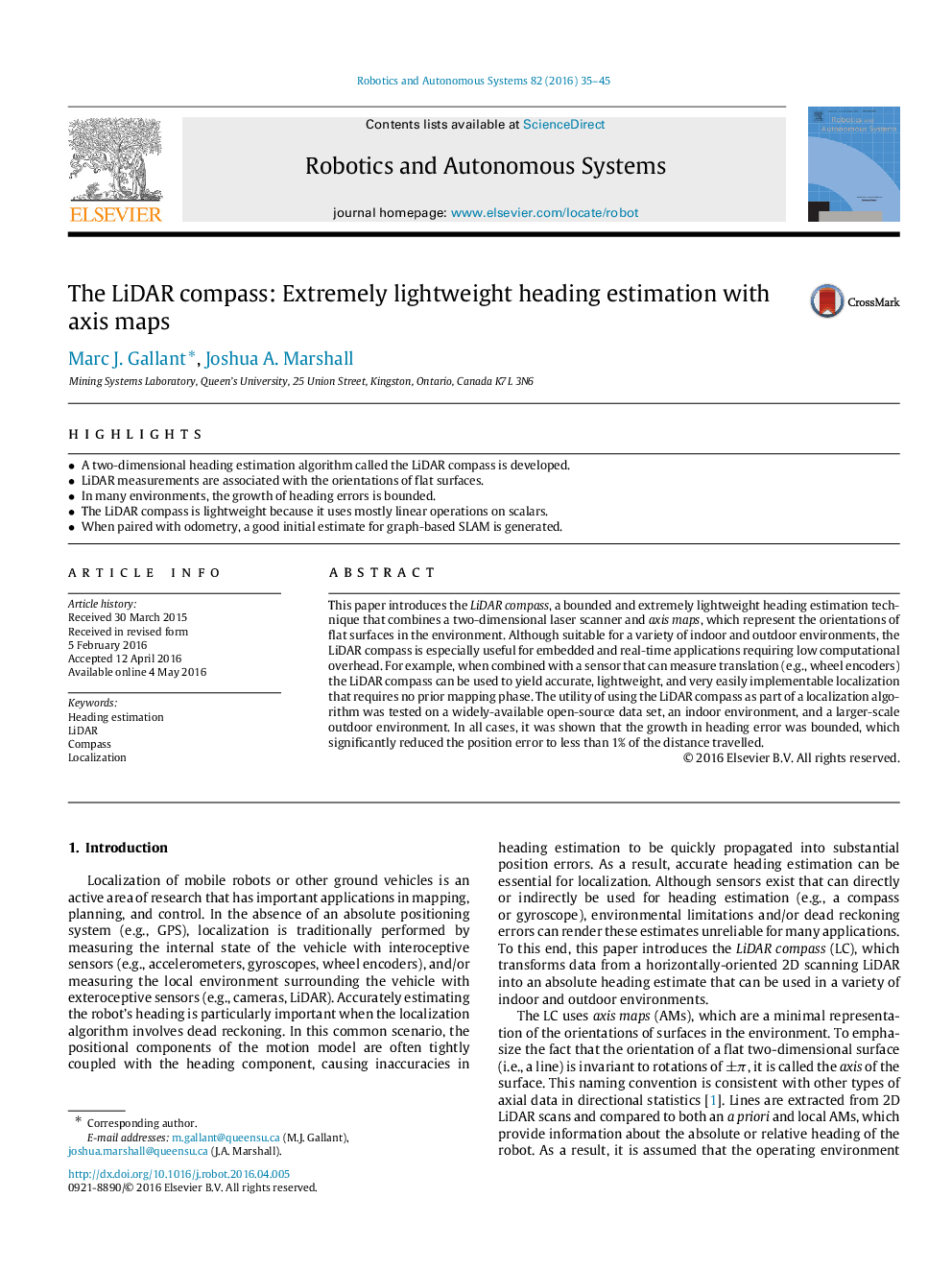| Article ID | Journal | Published Year | Pages | File Type |
|---|---|---|---|---|
| 411232 | Robotics and Autonomous Systems | 2016 | 11 Pages |
•A two-dimensional heading estimation algorithm called the LiDAR compass is developed.•LiDAR measurements are associated with the orientations of flat surfaces.•In many environments, the growth of heading errors is bounded.•The LiDAR compass is lightweight because it uses mostly linear operations on scalars.•When paired with odometry, a good initial estimate for graph-based SLAM is generated.
This paper introduces the LiDAR compass, a bounded and extremely lightweight heading estimation technique that combines a two-dimensional laser scanner and axis maps, which represent the orientations of flat surfaces in the environment. Although suitable for a variety of indoor and outdoor environments, the LiDAR compass is especially useful for embedded and real-time applications requiring low computational overhead. For example, when combined with a sensor that can measure translation (e.g., wheel encoders) the LiDAR compass can be used to yield accurate, lightweight, and very easily implementable localization that requires no prior mapping phase. The utility of using the LiDAR compass as part of a localization algorithm was tested on a widely-available open-source data set, an indoor environment, and a larger-scale outdoor environment. In all cases, it was shown that the growth in heading error was bounded, which significantly reduced the position error to less than 1% of the distance travelled.
